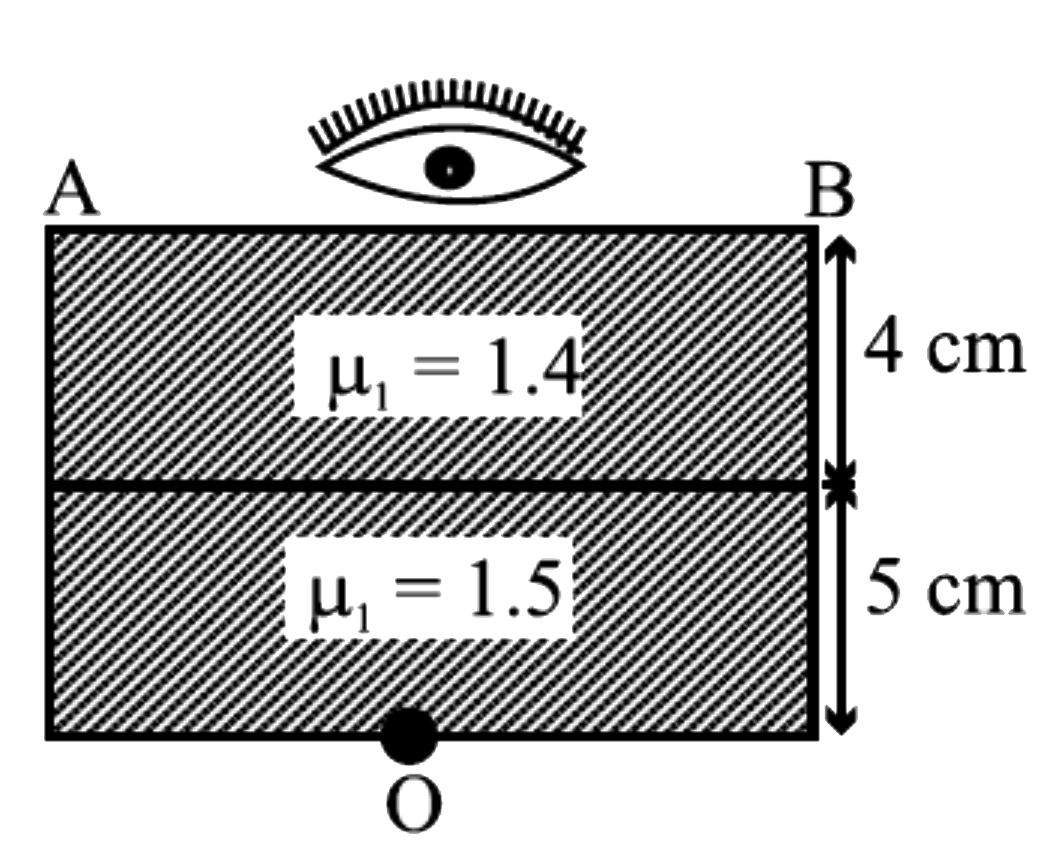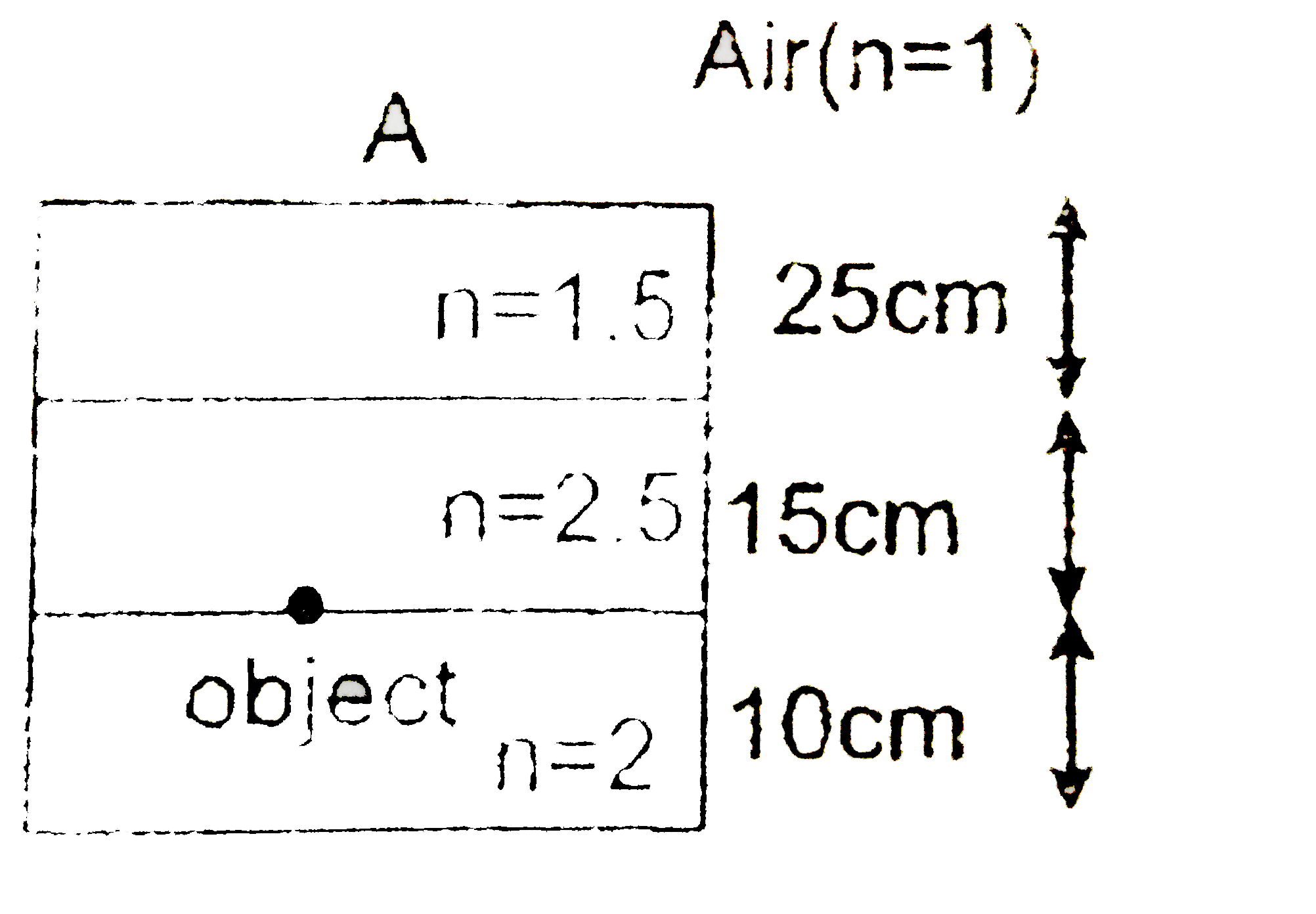A : The apparent depth of a tank of water decreases if viewed obliquely.
R : Real depth decreases if viewed obliquely.
If both Assertion & Reason are true and the reason is the correct explanation of the assertion, then mark (1).
If both Assertion & Reason are true but the reason is not the correct explanation of the assertion, then mark (2).
If Assertion is true statement but Reason is false, then mark (3).
If both Assertion and Reason are false statements, then mark (4).
The correct Answer is:C
To analyze the given assertion and reason, we can break down the solution into the following steps:
Step 1: Understand the Assertion
The assertion states that "the apparent depth of a tank of water decreases if viewed obliquely." This means that when we look at the water tank from an angle rather than straight down, the depth we perceive (apparent depth) appears to be less than the actual depth.
Hint: Consider how light travels from the water to our eyes and how angles affect our perception of depth.
Step 2: Understand the Reason
The reason states that "real depth decreases if viewed obliquely." Real depth refers to the actual physical depth of the water in the tank. This statement implies that the actual depth changes based on the angle of view, which is incorrect.
Hint: Think about the definition of real depth and whether it can change based on viewing angle.
Step 3: Analyze the Real Depth
Real depth is a fixed quantity that does not change regardless of the observer's position. It is the actual distance from the surface of the water to the bottom of the tank. Therefore, the reason provided is incorrect.
Hint: Remember that physical properties like depth do not change with perspective; they remain constant.
Step 4: Analyze the Apparent Depth
When viewed obliquely, the light rays from the bottom of the tank bend due to refraction as they pass from water to air. This bending causes the observer to perceive a shallower depth than the actual depth. Thus, the assertion is correct.
Hint: Consider the principles of refraction and how they affect our perception of objects submerged in water.
Step 5: Conclusion
Based on the analysis:
- The assertion is correct: the apparent depth decreases when viewed obliquely.
- The reason is incorrect: the real depth does not change with the angle of view.
Thus, the correct conclusion is that the assertion is true, but the reason is false.
Final Answer: Assertion (A) is true, and Reason (R) is false.
The assertion states that "the apparent depth of a tank of water decreases if viewed obliquely." This means that when we look at the water tank from an angle rather than straight down, the depth we perceive (apparent depth) appears to be less than the actual depth.
The reason states that "real depth decreases if viewed obliquely." Real depth refers to the actual physical depth of the water in the tank. This statement implies that the actual depth changes based on the angle of view, which is incorrect.
Real depth is a fixed quantity that does not change regardless of the observer's position. It is the actual distance from the surface of the water to the bottom of the tank. Therefore, the reason provided is incorrect.
When viewed obliquely, the light rays from the bottom of the tank bend due to refraction as they pass from water to air. This bending causes the observer to perceive a shallower depth than the actual depth. Thus, the assertion is correct.
Based on the analysis:
- The assertion is correct: the apparent depth decreases when viewed obliquely.
- The reason is incorrect: the real depth does not change with the angle of view.
Topper's Solved these Questions
- RAY OPTICS AND OPTICAL INSTRUMENTSBook:AAKASH INSTITUTEChapter:RAY OPTICS AND OPTICAL INSTRUMENTSExercise:ASSIGNMENT (SECTION - C)
Explore 76 Videos
- PHYSICAL WORLDBook:AAKASH INSTITUTEChapter:PHYSICAL WORLDExercise:ASSIGNMENT (Section-B)
Explore 5 Videos
- SEMICONDUCTOR ELECTRONICS (MATERIAL, DEVICES AND SIMPLE CIRUITS )Book:AAKASH INSTITUTEChapter:SEMICONDUCTOR ELECTRONICS (MATERIAL, DEVICES AND SIMPLE CIRUITS )Exercise:Assignment SECTION - D (Assertion & reason type Question)
Explore 10 Videos
Similar Questions
Answer the following questions :
Does the apparent depth of a tank of water change if viewed obliquely ? If so, does the apparent depth increase or decrease ?
View SolutionAnswer the following questions :
(a) You have learnt that plane and convex mirrors produce virtual images of objects. Can they produce real images under some circumstances ? Explain.
(b) A virtual image, we always say, cannot be caught on a screen. Yet when we see a virtual image, we bring it to screen i.e. retine of our eye. Is there a contradiction ?
( c) A diver under water looks obliquely at a fisherman standing on the bank of a lake. Would the fisherman look taller or shorter than what he actually is ?
(d) Does the apparent depth of a tank of water change if viewed obliquely ? If so, does the apparent depth increase or decrease ?
( e) The refractive index of diamond is much greater than that of ordinary glass. Is this fact of some use to a diamond cutter ?
View Solution
Knowledge Check
The apparent depth of an object O from AB is
 A4.29cmB5.43 cmC6.19 cmD5.99 cm
A4.29cmB5.43 cmC6.19 cmD5.99 cmThe apparent depth of an object plaecd in a denser medium and seen through a rarer medium is ………… .
Agreater than the real depthBequal to the real depthCdouble its real depthDless than real depth
Real and Apparent Depth
View SolutionAll along we have been considering the apparent depth of an object viewed normally. Suppose that the object is being viewed at an angle θ to the surface. If the actual depth is d and angle of ray inside water is ϕ, what is the apparent depth ?
View SolutionAnswer the following questions :
(a) You have learnt that plane and convex mirrors produce virtual images of objects. Can they produce real images under some circumstances ? Explain.
(b) A virtual image, we always say, cannot be caught on a screen. Yet when we 'see' a virtual image, we are obviously bringing it on to the 'screen' (i.e., the retina) of our eye. Is there a contradiction ?
(c) A diver under water, looks obliquely at a fisherman standing on the bank of a lake. Would the fisherman look taller or shorter to the diver than what he actually is ?
(d) Does the apparent depth of a tank of water change if viewed obliquely ? If so, does the apparent depth increase or decrease ?
(e) The refractive index of diamond is much greater than that of ordinary glass. Is this fact of some use to a diamond cutter ?
View SolutionFind the apparent depth of object of the object seen by observe A (in the figure shown)

View SolutionA small object is placed at the centre of the bottom of a cylindrical vessel of radius 3 cm and height 4 cm filled completely with water. Consider the ray leaving the vessel through a corner. Suppose this ray and the ray along the axis of the vessel are used to trace the image. Find the apparent depth of the image and the ratio of real depth to the apparent depth under the assumptions taken. Refractive index -of water = 1-33.
View SolutionA glass (ng=1.5) block of thickness 2.7 cm is placed on a postage stamp. What would be the apparent depth of the stamp if it is viewed (i) normally (ii) obliquely above the glass slab ?
View Solution

